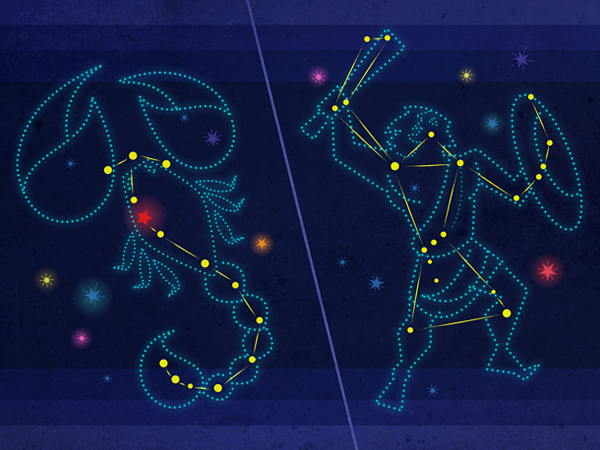Astronomy Blog: Discovering the Constellations


As I said before, one of the easiest objects to view in Earth’s night sky is our very own moon. There are also over 9,000 stars that are considered to be visible to the naked eye, and these are part of 88 official constellations in our sky recognized by the International Astronomical Union.
The ancient Greeks and Babylonians are credited with having first formulated 48 of these constellations. The Greeks told the tale of how when Orion sets, Scorpius rises, and why they were put on opposite sides of the celestial sphere. Orion was a mighty hunter who always boasted about his skills. But Juno, wife of Jupiter, didn’t like this so she placed a scorpion on the path of the great Orion. Orion trod upon the scorpion, which stung and killed him. Jupiter then decided to place the two constellations on the opposite sides of the celestial sphere, where they cannot bother each other. Hence, one does not see both Orion and Scorpius together in the night sky.

The best times to view constellations are on clear nights when the moon is new, meaning when the moon is not visible in the night sky. Some useful tools to help you spot constellations are star charts that orient you to where they are located in the sky. There are many star gazing apps for your smartphone that map out constellations on your screen as you face your camera to the sky. Star Chart is a popular free app for both iOS and Android devices. To start observing, simply find a dark, open area to lie down on a clear night and bring a few star charts or your smartphone.

One of the easiest things to spot from winter to spring is the constellation Orion because of its famous Orion’s Belt. Three bright stars in a straight row form this belt, which is on the waist of the mighty figure of Orion.
By studying the constellations in the sky, you will eventually learn to spot other objects within each constellation. For example, the beautiful Orion Nebula (a cloud of gas and dust) lies in the constellation of Orion and the magnificent Andromeda Galaxy lies in the constellation of Andromeda.

Hawaii’s Imiloa Astronomy Center’s website provides monthly sky charts to help local star gazers on their night sky quests. March’s sky chart will help you find the Big and Small Dipper, plus Orion. It also has helpful information on moon phases so you can plan on your next star gazing session. Tip: New moon = dark skies = great for star gazing (if it’s not cloudy). Good luck! My next post will be about our very own solar system, so stay tuned!
